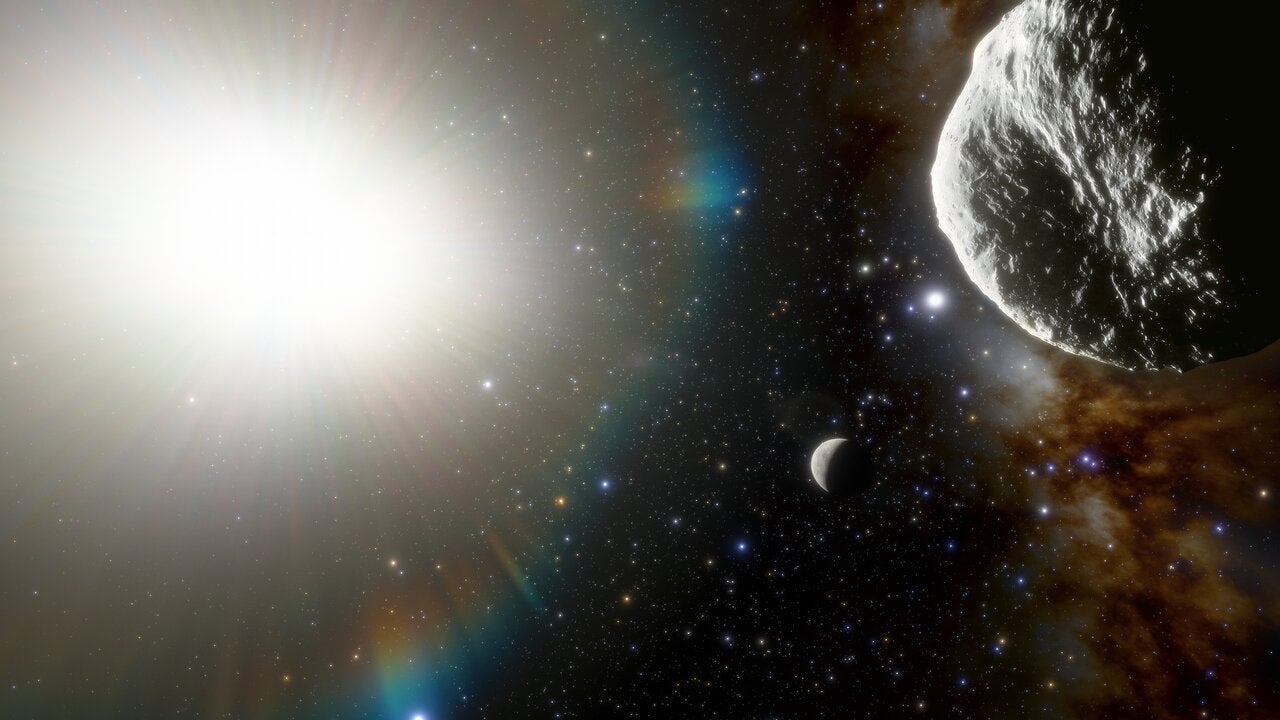Scientists discover the fastest orbiting asteroid in the Solar System
The asteroid gets so close to the Sun that it can heat up to a temperature that is enough to melt lead

The fastest-orbiting asteroid in the Solar System, which travels around the Sun in 113 Earth days, has been discovered by scientists.
The tiny space rock – dubbed 2021 PH27 – is about one kilometre in diameter and has an elliptical orbit that is the smallest mean distance from the Sun of any known object in the Solar System, found researchers led by Scott Sheppard from the Carnegie Institution of Science in the US.
“Understanding the population of asteroids interior to Earth’s orbit is important to complete the census of asteroids near Earth,” Dr Sheppard said in a statement.
This includes asteroids most likely to impact the planet and that may approach it during daylight, according to Dr Sheppard. These asteroids cannot be easily discovered in most surveys that observe at night away from the Sun, he said.
Using the powerful 570-megapixel Dark Energy Camera (DECam) in Chile, astronomers found the asteroid’s orbit crosses the paths of Mercury and Venus, passing within 20 million kilometres of the Sun every 113 days.
Since these interior asteroids are “very often” hidden by the glare of the Sun, the scientists point to twilight – just after sunset or before sunrise – as the best time to hunt for these space rocks in the direction of the two innermost planets.
The close approach of the asteroid to the Sun can heat it up to about 500 degrees Celsius, a temperature hot enough to melt lead, said researchers.
“Though telescope time for astronomers is very precious, the international nature and love of the unknown make astronomers very willing to override their own science and observations to follow up new, interesting discoveries like this,” Dr Sheppard said.
Scientists believe the tiny space rock may have been formed in the main asteroid belt between Mars and Jupiter, “got dislodged” by gravitational disturbances from the inner planets and subsequently drawn closer to the Sun to its current orbit.
Based on its high orbital inclination of 32 degrees, however, scientists speculate it could instead be an extinct comet from the outer Solar System. The comet could have been drawn into a closer orbit when passing near one of the terrestrial planets.
Researchers call for future observations of the asteroid to shed more light on its origins.
They believe the space rock could eventually “either collide with Mercury, Venus or the Sun” in a few million years or be ejected from the inner Solar System by the gravitational influence of the inner planets.
Knowing what fraction of the Solar System’s asteroids are interior to Earth and Venus compared to the exterior could help estimate the strength and make-up of these objects, according to researchers.
Join our commenting forum
Join thought-provoking conversations, follow other Independent readers and see their replies
Comments
Bookmark popover
Removed from bookmarks